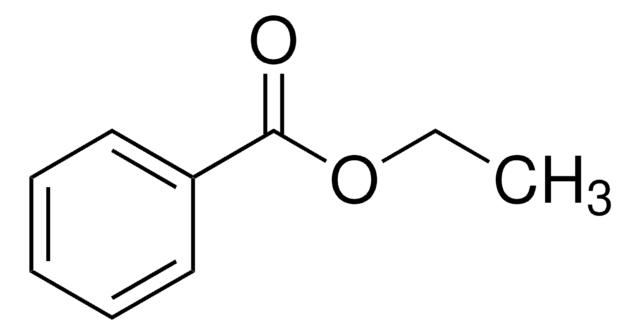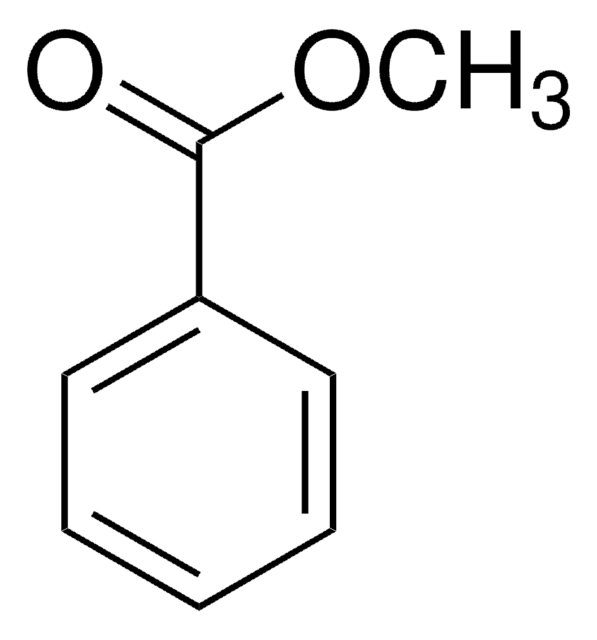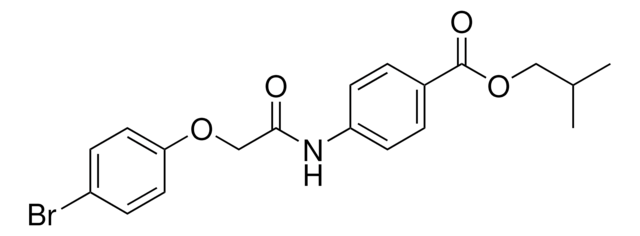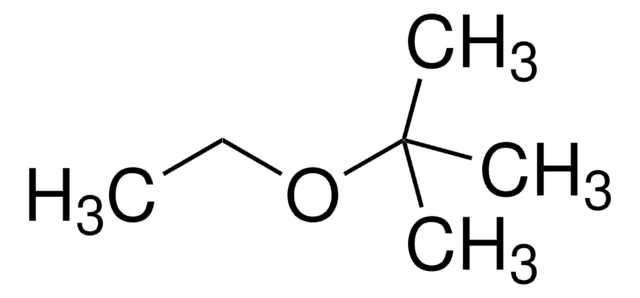293296
Butyl benzoate
99%
Synonyme(s) :
Benzoic acid n-butyl ester, n-Butyl benzoate
About This Item
Produits recommandés
Essai
99%
Indice de réfraction
n20/D 1.498 (lit.)
pb
249 °C (lit.)
Densité
1.01 g/mL at 25 °C (lit.)
Groupe fonctionnel
ester
phenyl
Chaîne SMILES
CCCCOC(=O)c1ccccc1
InChI
1S/C11H14O2/c1-2-3-9-13-11(12)10-7-5-4-6-8-10/h4-8H,2-3,9H2,1H3
Clé InChI
XSIFPSYPOVKYCO-UHFFFAOYSA-N
Vous recherchez des produits similaires ? Visite Guide de comparaison des produits
Catégories apparentées
Application
- preservative in commercial cosmetic lotions
- as involatile solvent, for sampling of isocyanates with silica gel solid phase extraction
Mention d'avertissement
Warning
Mentions de danger
Conseils de prudence
Classification des risques
Acute Tox. 4 Oral - Eye Irrit. 2 - Skin Irrit. 2
Code de la classe de stockage
10 - Combustible liquids
Classe de danger pour l'eau (WGK)
WGK 1
Point d'éclair (°F)
222.8 °F - closed cup
Point d'éclair (°C)
106 °C - closed cup
Équipement de protection individuelle
Eyeshields, Faceshields, Gloves, type ABEK (EN14387) respirator filter
Faites votre choix parmi les versions les plus récentes :
Déjà en possession de ce produit ?
Retrouvez la documentation relative aux produits que vous avez récemment achetés dans la Bibliothèque de documents.
Les clients ont également consulté
Notre équipe de scientifiques dispose d'une expérience dans tous les secteurs de la recherche, notamment en sciences de la vie, science des matériaux, synthèse chimique, chromatographie, analyse et dans de nombreux autres domaines..
Contacter notre Service technique









